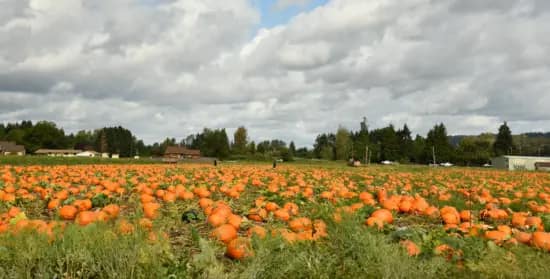The pumpkin is an integral part of American autumn, but its domestication in the Americas dates back thousands of years. We uncover the story of the pumpkin, starting at a time far before colonization.
BY EMILY JOY MENESESBARISTA MAGAZINE ONLINE
Featured photo by Matt Eberle via Unsplash
Harvested in October, the pumpkin is synonymous with autumn. But how exactly did this vibrant gourd come to be such an integral facet of American culture? The pumpkin existed in the Americas long before the arrival of European settlers. Though it’s commonly associated with pumpkin pie and jack-o-lanterns, the pumpkin has historically been used in countless other ways. Today, we’re unraveling the history behind the pumpkin and unearthing its true roots—which date back far before colonization.
Roots in North and Central America
The pumpkin is a member of the gourd family, which includes watermelon, cucumbers, cantaloupe, and honeydew melon—all of which are native to North and Central America. Archaeologists have found evidence of pumpkin cultivation and consumption in Mexico from as far back as 7,500 to 5,500 B.C. This was even before the cultivation of beans or maize, and well before European settlers arrived in the Americas.
Indigenous Use of Pumpkins
Early pumpkins were harder, more bitter, and smaller in size than the ones commonly seen today. Indigenous Americans valued them for their ability to be dried and preserved, and this trait made them a powerful tool of survival during long winters. They used the plant in many ways: roasting, boiling, and baking it, turning it into flour or pottery, and consuming the seeds as medicine. Dried pumpkin was peeled, sliced, and hung in storerooms to serve as sustenance to last through the winter. Many different tribes cultivated pumpkin: the Apaches, Hopi, Navajo, and more.
European Consumption and Use
Upon coming to the Americas, European settlers came across pumpkins and started bringing them back to their home countries. They were first cultivated in Europe in the mid-1500s. There, they became a popular ingredient for baked goods, and the pumpkin pie was first introduced to England in the 1700s.
Jack-o-lanterns evolved in Ireland hundreds of years ago. Well before pumpkins made their way to Europe, turnips and potatoes served as the go-to canvasses for carving. After the Irish discovered pumpkins in America, they made the gourds a part of their Halloween rituals, carving faces and symbols into them to ward off “wandering spirits.“
A Crop of Controversy
Though the pumpkin is integral to American autumnal traditions today, it wasn’t always held in such high regard. When European settlers first arrived to the Americas, they saw the plant as undesirable. Many early writings from the settlers reveal how they considered the gourd to be a symbol of the “wild“ and “uncivilized“ nature that they often attributed to the indigenous peoples of America.
For many European settlers, pumpkin was seen as a rustic, “peasant“ food. It wasn’t until later, when the settlers were experiencing hardship themselves after dissenting from their home countries, that they grew to appreciate the crop that they had previously deemed as “lowly.“
Appreciating Pumpkins Today
Today, pumpkins are a natural part of the fall season, finding their way onto restaurant and café menus year after year. The next time you enjoy a slice of pumpkin pie or a pumpkin spice latte, take some time to acknowledge the history behind this cultural icon and the deep significance it has held for indigenous Americans for thousands of years.
ABOUT THE AUTHOR
Emily Joy Meneses (she/they) is a writer and musician based in Los Angeles. Her hobbies include foraging, cortados, vintage synths, and connecting with her Filipino roots through music, art, food, and beverage.
READ THE LATEST BARISTA MAGAZINE
Out now: It’s the October + November 2023 issue of Barista Magazine! Read for free with our digital edition. And for more than three years’ worth of issues, visit our digital archives here.
Get a hard copy of the magazine through our online store, or start a subscription for one year or two.


